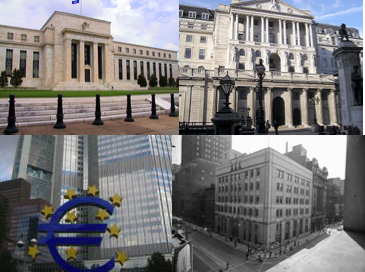The European Central Bank (ECB) introduced three measures aimed at loosening monetary policy further and at supporting lending to non- financial companies. These measures will not only address the deflationary concerns which policy makers are worried about, but also help boost domestic demand, growth, as well as external demand for imports, which will directly benefit emerging market countries. The three measures in more detail are:
1.Refinancing rate: It reduced its main refinancing rate, at which it lends the majority of liquidity to the banking system, by 0.10% to 0.15%.
2.TLTRO: It introduced targeted longer-term refinancing operations (TLTRO). This will enable ECB bank counterparties to initially borrow up to 7% of their loans to the euro-zone non-financial private sector, excluding mortgages.
3.QE: Last, but by no means least, the ECB announced that it would “intensify preparatory work” on a scheme promoting the purchase of asset-backed securities, a form of quantitative easing (QE).
What do these measures mean for emerging markets?
According to Peter Eerdmans Co-Head of Emerging Market Fixed Income and Werner Gey van Pittius Co-Head of Emerging Market Fixed Income at Investec AM, there are four key points:
1. Impact on emerging market central bank policy makers
Central bank policy makers from Mexico to China, Turkey to Hungary have been more dovish taking into consideration not only their domestic economic circumstances but also the prevailing global rate policy of the major central banks. The expectations for easier monetary policy in the euro zone have maintained the global trajectory of ample monetary liquidity among the major central banks.
2. Domestic growth in emerging markets
Lower domestic interest rates and cheaper funding for corporates and governments amid contained inflationary pressures should further boost domestic growth across the regions. This has been a particular long-term aim of politicians and policy makers who wish to rebalance their economies and diversify away from the traditional focus on exports to developed economies. Our view remains that these efforts will take some time to rebalance, and in the meantime exports will continue to be the largest driver of growth.
3. Trade and exports
As well as suppressing domestic interest rates, another benefit from global liquidity is an increase in growth and trade, which eventually drives emerging market exports.
So far, the picture on world trade seems quite favorable for emerging markets. The question remains, however, what impact would the ECB’s recent moves have for trade with Europe, and which regions in particular are likely to benefit from that.
4. Ample global liquidity, low volatility and search for yield
The last, but by no means least, impact of ECB policies on emerging markets is the continuation of ample liquidity. This has taken volatility levels to lows not seen since before the great financial crisis.
Ample liquidity, low volatility and a clear trajectory by central banks to keep monetary policy accommodative have accentuated the search for yield across global markets. We continue to see demand for yield and particularly for emerging market yield, which offers attractive valuations, stronger fundamentals than developed markets, and positive real yields. The one caveat is that historically these periods of sub-normal volatility have not lasted more than two to three years, but, in our view, policy makers are still a few years away from raising concerns on liquidity given benign inflationary pressures and output gaps.
In conclusion, Investec AM expects he latest ECB moves not only to maintain the increasing demand for exports from emerging markets, but also to boost growth dynamics within emerging economies through more dovish central bank policies, as well as improving market sentiment through ample liquidity, clear communication and low volatility.
Click on this link to view the report.

